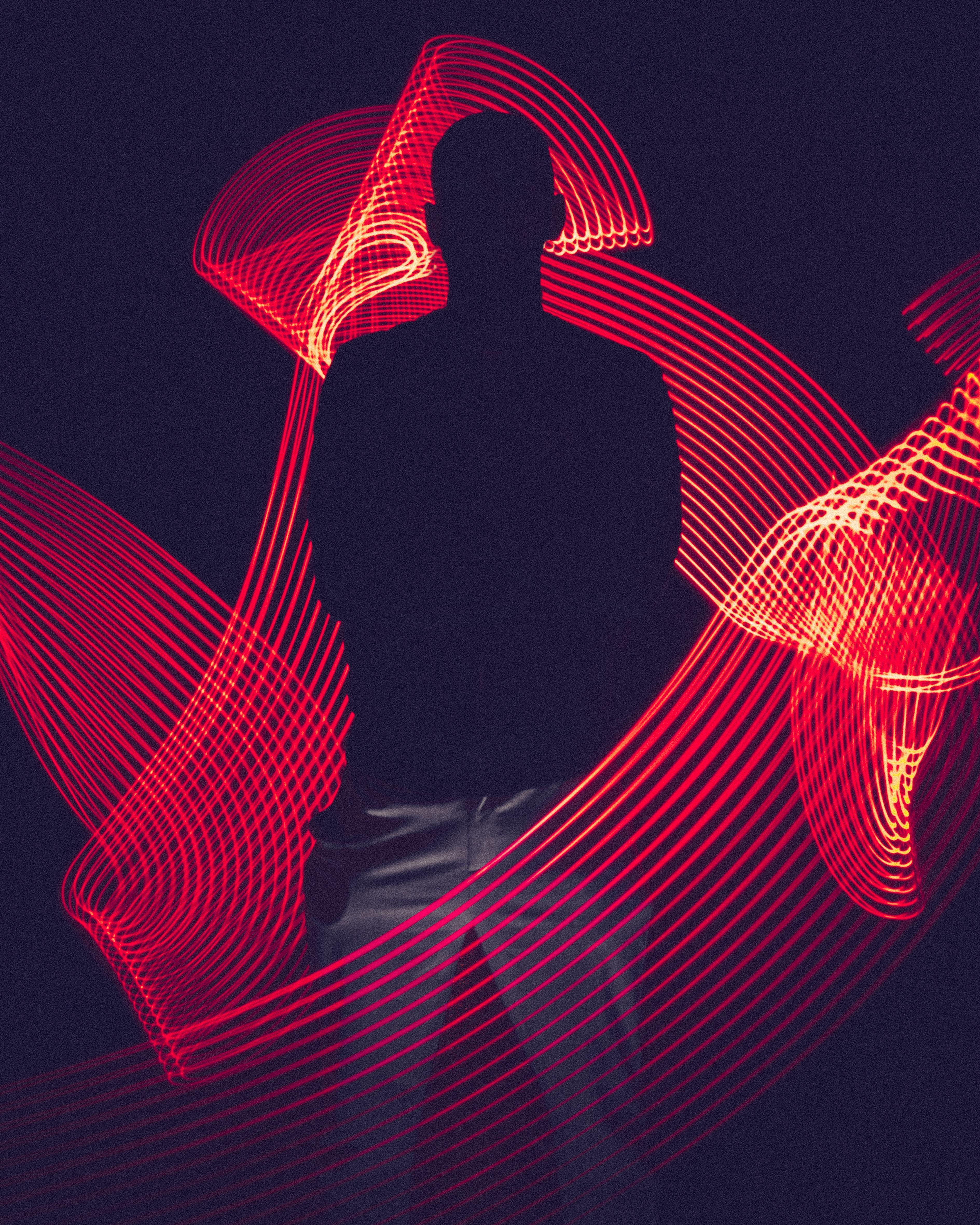So you’ve probably heard about acupuncture and how it involves inserting tiny needles into certain points on your body to promote healing and balance. But have you ever heard of auriculotherapy? It’s a fascinating alternative therapy that focuses specifically on your ears. By stimulating certain points on your ear, auriculotherapy aims to alleviate pain, reduce stress, and even help with addiction. In this article, we’ll explore the basics of auriculotherapy and how it has gained popularity as a non-invasive and drug-free solution for various health issues.
1. Introduction to Auriculotherapy
1.1 What is Auriculotherapy?
Auriculotherapy is a form of alternative medicine that involves stimulating specific points on the ear to promote healing and alleviate various health conditions. It is based on the belief that the ear is a microsystem that reflects the entire body, and by targeting specific points on the ear, one can effectively treat various health issues.
1.2 History of Auriculotherapy
Auriculotherapy has a rich history dating back thousands of years. It can be traced back to ancient China, where it was mentioned in the Huangdi Neijing (Yellow Emperor’s Inner Canon), a foundational Chinese medical text. In the early 1950s, French physician Dr. Paul Nogier further developed the practice and mapped out the auricular points, leading to its widespread recognition and use in the Western world. Today, auriculotherapy is practiced by healthcare professionals worldwide and continues to evolve with ongoing research and advancements.
1.3 Principle of Auriculotherapy
The principle of auriculotherapy is rooted in the concept of reflexology, which asserts that specific areas of the body, such as the ears, hands, and feet, are connected to other parts of the body. According to this theory, by stimulating these areas, it is possible to affect and help balance the corresponding body systems and organs. Auriculotherapy utilizes this principle by focusing solely on the ear and its connection to the rest of the body to stimulate healing and restore balance.
2. Understanding Ear Anatomy
2.1 External Ear
The external ear, also known as the auricle or pinna, is the visible part of the ear that extends from the head. It is composed of cartilage covered in skin and serves as a protective structure for the underlying parts of the ear. The external ear plays a crucial role in capturing sound waves and funneling them into the ear canal for further processing.
2.2 Internal Ear
The internal ear, also referred to as the inner ear, is located deep within the temporal bone. It is responsible for converting sound waves into electrical impulses and transmitting them to the brain for interpretation. Additionally, the inner ear plays a vital role in maintaining balance and equilibrium through the vestibular system.
2.3 Nerve Pathways in the Ear
The ear is innervated by various nerves, including the auriculotemporal nerve, the vagus nerve, and the trigeminal nerve. These nerves carry sensory information from the ear to the brain, allowing for communication and coordination between the ear and the central nervous system. It is through these nerve pathways that auriculotherapy aims to stimulate the body’s physiological responses.

3. Common Auriculotherapy Points
3.1 Shen Men
Shen Men, also known as the “Heavenly Gate,” is one of the most commonly used auricular points. It is located in the triangular fossa of the ear and is believed to have a calming and balancing effect on the mind and body. Shen Men is often stimulated to promote relaxation, reduce stress, alleviate pain, and improve overall well-being.
3.2 Point Zero
Point Zero, also referred to as the “Master Reset Point,” is located at the center of the earlobe. It is believed to have a profound grounding effect and is commonly used to treat a wide range of conditions, including pain, addiction, anxiety, and insomnia. Stimulating Point Zero is thought to reset the body’s energy and restore balance.
3.3 Kidney
The kidney point is located on the lower third of the triangular fossa, near the earlobe. According to traditional Chinese medicine, the kidney is associated with the body’s vital energy, or Qi, and plays a crucial role in regulating overall health and vitality. Stimulating the kidney point is believed to strengthen the kidney functions, boost energy levels, and promote overall well-being.
3.4 Liver
The liver point is located on the upper third of the triangular fossa, above the kidney point. In traditional Chinese medicine, the liver is associated with the smooth flow of energy and emotions. Stimulating the liver point is thought to promote the healthy functioning of the liver, regulate emotions, and alleviate symptoms such as anger and irritability.
3.5 Spleen
The spleen point is situated between the kidney and liver points, in the middle third of the triangular fossa. In traditional Chinese medicine, the spleen is responsible for digestion and the transformation of food into Qi and blood. Stimulating the spleen point is believed to enhance digestive functions, improve nutrient absorption, and support overall vitality.
3.6 Adrenal Gland
The adrenal gland point is located just above the kidney point, on the border of the triangular fossa. The adrenal glands are responsible for producing hormones that regulate stress response, metabolism, and energy levels. Stimulating the adrenal gland point is thought to help balance the body’s stress response, support adrenal function, and promote overall well-being.
3.7 Lungs
The lung point is situated on the upper part of the ear, near the helix. The lungs play a vital role in respiration and oxygenation of the blood. Stimulating the lung point is believed to promote healthy lung function, enhance respiratory capacity, and alleviate symptoms associated with respiratory disorders such as asthma and allergies.
3.8 Heart
The heart point is located in the upper part of the triangular fossa, above the lung point. In traditional Chinese medicine, the heart is associated with emotions, mental clarity, and circulation. Stimulating the heart point is thought to help regulate emotions, improve cognitive function, and support cardiovascular health.
3.9 Stomach
The stomach point is situated in the middle part of the auricle, close to the lower border of the triangular fossa. The stomach is responsible for digestion and nutrient absorption. Stimulating the stomach point is believed to aid in digestion, alleviate digestive disorders such as gastritis and indigestion, and support healthy weight management.
3.10 Brain
The brain point is located at the uppermost part of the ear, near the top of the helix. This point is believed to have a regulating effect on the central nervous system and is commonly used to address neurological conditions, improve cognitive function, and promote mental clarity.
4. Techniques Used in Auriculotherapy
4.1 Needle Insertion
Needle insertion is one of the primary techniques used in auriculotherapy. Fine, sterile needles are inserted into specific auricular points based on the individual’s condition and treatment goals. The needles are then manually manipulated or stimulated with electrical currents to activate the body’s healing response.
4.2 Electrical Stimulation
Electrical stimulation involves the use of a small electrical device connected to the needles inserted in the auricular points. Low-frequency electrical currents are applied to enhance the therapeutic effects of auriculotherapy. This technique can provide targeted stimulation and promote a more profound physiological response.
4.3 Magnetic Pellets
Magnetic pellets are small, gold or silver-plated magnets that are placed on specific auricular points using adhesive tape. The magnets provide constant pressure and magnetic stimulation to the points, promoting a continuous therapeutic effect. This technique is often used for extended stimulation between sessions.
4.4 Laser Therapy
Laser therapy is a non-invasive technique that utilizes low-level lasers to stimulate auricular points. The laser emits a specific wavelength of light that penetrates the skin and activates the body’s natural healing processes. Laser therapy is gentle, painless, and suitable for individuals who are needle-sensitive or prefer a non-invasive approach.
4.5 Auricular Seeds
Auricular seeds, also known as ear seeds or ear tacks, are tiny seeds or pellets made from materials such as Vaccaria seeds or metal alloy. These seeds are affixed to auricular points using adhesive tape or small adhesive patches. Gentle pressure is applied to the seeds for continuous stimulation throughout the day, extending the therapeutic benefits of auriculotherapy.
4.6 Ear Acupressure
Ear acupressure involves applying manual pressure to specific auricular points using fingers or massage tools. This technique helps stimulate the points and promote the body’s innate healing response. Ear acupressure can be self-administered or performed by a trained practitioner, providing a convenient and accessible therapeutic option.

5. Conditions Treated with Auriculotherapy
5.1 Pain Management
Auriculotherapy is widely used for pain management. It can effectively alleviate acute and chronic pain, such as headaches, migraines, arthritis, and musculoskeletal conditions. Auriculotherapy targets the central nervous system and stimulates the release of endorphins, the body’s natural painkillers, providing relief and improving the individual’s overall quality of life.
5.2 Addiction Treatment
Auriculotherapy is recognized as an effective adjunct treatment for addiction recovery. By stimulating specific auricular points, it helps reduce cravings, alleviate withdrawal symptoms, and promote detoxification. Auriculotherapy can be utilized in conjunction with conventional addiction treatment approaches, enhancing the outcomes and supporting long-term recovery.
5.3 Insomnia
Insomnia, a common sleep disorder, can significantly impact an individual’s well-being and overall functioning. Auriculotherapy offers a natural and non-pharmacological approach to addressing insomnia by regulating the body’s sleep-wake cycle. By stimulating appropriate auricular points, it can improve sleep quality, reduce sleep disturbances, and promote restful sleep.
5.4 Stress and Anxiety
Auriculotherapy is beneficial for managing stress and anxiety-related conditions. By targeting specific auricular points, it can help activate the relaxation response, reduce stress hormones, and induce a sense of calm and tranquility. Auriculotherapy can be a valuable addition to stress management techniques, promoting emotional well-being and fostering resilience.
5.5 Digestive Disorders
Digestive disorders, such as irritable bowel syndrome (IBS), gastritis, and indigestion, can significantly impact an individual’s quality of life. Auriculotherapy can support digestive health by stimulating points associated with the stomach, spleen, and intestines. It can help regulate digestion, alleviate symptoms, and improve overall gastrointestinal function.
5.6 Respiratory Issues
Auriculotherapy can be beneficial for individuals with respiratory issues, including asthma, allergies, and chronic obstructive pulmonary disease (COPD). By targeting auricular points associated with the lungs and respiratory system, it helps promote healthy lung function, improve breathing capacity, and reduce respiratory symptoms.
5.7 Hormonal Imbalances
Hormonal imbalances can manifest in various ways, impacting both physical and emotional well-being. Auriculotherapy can assist in balancing hormonal function by stimulating specific points associated with the endocrine system. This gentle and precise approach can help regulate hormone levels, alleviate symptoms such as mood swings and irregular menstrual cycles, and promote hormonal harmony.
6. Application and Procedure
6.1 Assessment and Diagnosis
Before the application of auriculotherapy, a thorough assessment and diagnosis are conducted to determine the individual’s specific condition and treatment plan. The practitioner will assess the individual’s medical history, symptoms, and overall health to create a personalized approach. This process may involve questioning, physical examination, and evaluating the individual’s auricular points.
6.2 Treatment Plan
Based on the assessment, a treatment plan is developed that outlines the auricular points to be targeted, the techniques to be used, and the frequency and duration of the sessions. The treatment plan is tailored to the individual’s specific needs and goals, ensuring a customized and effective approach.
6.3 Ear Charting
During the treatment, the practitioner may use an ear chart to identify and locate the specific auricular points to be stimulated. The ear chart serves as a visual guide, depicting the various auricular points and their corresponding areas of the body or systems. This aids in accurate and precise point selection during the treatment.
6.4 Stimulating Auricular Points
During the treatment session, the practitioner will stimulate the selected auricular points using the chosen technique, such as needle insertion, electrical stimulation, or acupressure. The procedure is generally painless and well-tolerated. Depending on the individual’s response, the practitioner may adjust the stimulation intensity or duration for optimal results.

7. Benefits and Effectiveness
7.1 Pain Relief
Auriculotherapy has been found to be effective in providing pain relief for various acute and chronic conditions. By activating the body’s endorphin system and modifying pain perception pathways, it can effectively alleviate pain and improve the individual’s comfort and well-being.
7.2 Non-Invasive Treatment
One of the significant advantages of auriculotherapy is that it is non-invasive, meaning it does not require surgical procedures or the use of drugs. This makes it a safe and accessible option for individuals seeking alternative treatments or are sensitive to medications or invasive interventions.
7.3 Highly Targeted Approach
Auriculotherapy’s targeted approach allows for precise stimulation of specific auricular points according to the individual’s condition. This personalized treatment can enhance the effectiveness of the therapy by directly addressing the underlying issues and promoting the body’s self-healing mechanisms.
7.4 Minimal Side Effects
Compared to conventional treatments, auriculotherapy generally has minimal side effects. The adverse reactions are typically mild and transient, such as slight bruising or localized tenderness at the needle insertion site. Rarely, individuals may experience dizziness or lightheadedness during or after the treatment. However, these effects are temporary and tend to resolve quickly.
8. Safety and Precautions
8.1 Certified Practitioners
To ensure safety and optimal outcomes, it is essential to seek auriculotherapy from certified practitioners who have undergone comprehensive training and obtained appropriate credentials. Certified practitioners have a deep understanding of ear anatomy, proper technique application, and safety protocols, minimizing the risk of adverse events and maximizing the therapeutic benefits.
8.2 Proper Sterilization Techniques
For treatments that involve needle insertion, it is crucial to ensure proper sterilization techniques are followed. This includes using sterile single-use needles, disinfecting the area of the ear before insertion, and adhering to strict aseptic procedures. By maintaining a clean and sterile environment, the risk of infection or cross-contamination is significantly reduced.
8.3 Pregnant Women and Children
Special caution should be exercised when considering auriculotherapy for pregnant women and children. While the therapy is generally safe, it is advisable to consult with a healthcare professional with expertise in prenatal care or pediatric health before initiating treatment. They can provide guidance and determine the most appropriate approach for these specific populations.

9. Research and Evidence-Based Support
9.1 Clinical Studies
Numerous clinical studies have been conducted to evaluate the efficacy of auriculotherapy in treating various conditions. These studies have shown promising results, indicating that auriculotherapy can be beneficial for pain management, addiction recovery, stress reduction, and other health issues. However, further research is still needed to fully understand the mechanisms of action and to expand the evidence base.
9.2 Patient Testimonials
Patient testimonials provide valuable insights into the personal experiences of individuals who have undergone auriculotherapy. While personal anecdotes can be informative and inspiring, it is important to acknowledge that individual results may vary. Patient testimonials should complement scientific research and not be solely relied upon as evidence.
11. Conclusion
Auriculotherapy is a holistic and non-invasive approach that holds significant potential in the field of alternative medicine. By targeting specific points on the ear, this therapy aims to stimulate the body’s innate healing processes, restore balance, and promote overall well-being. With a comprehensive understanding of ear anatomy, the multiple techniques used in auriculotherapy, and the wide range of conditions it can potentially address, this modality offers an alternative avenue for individuals seeking natural and effective approaches to health and healing. As research and evidence continue to support its effectiveness, auriculotherapy has the potential to become increasingly integrated into conventional healthcare practices, offering individuals a valuable and accessible option for optimal wellness.

